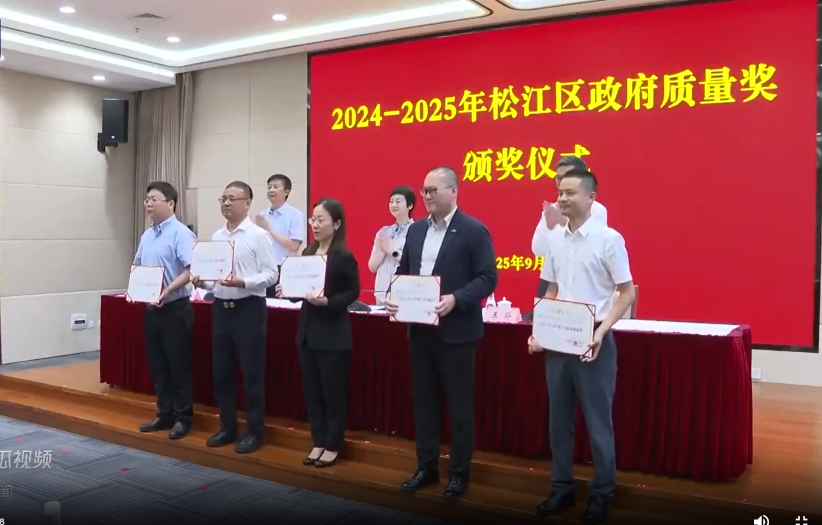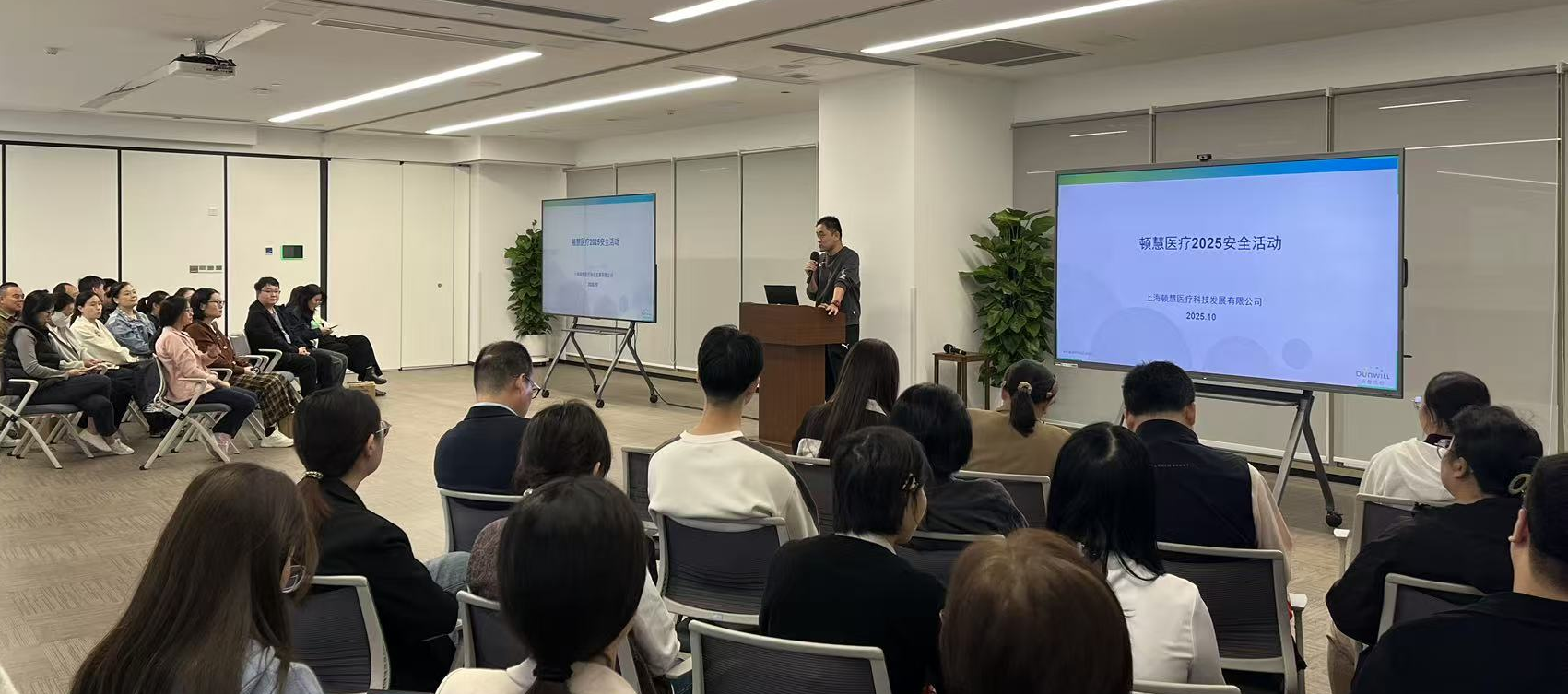Breaking the Dilemma in Primary-Level Screening, Leading the Wave of Standardization-A Wonderful Review of Dunwill Medical's Thematic Conference
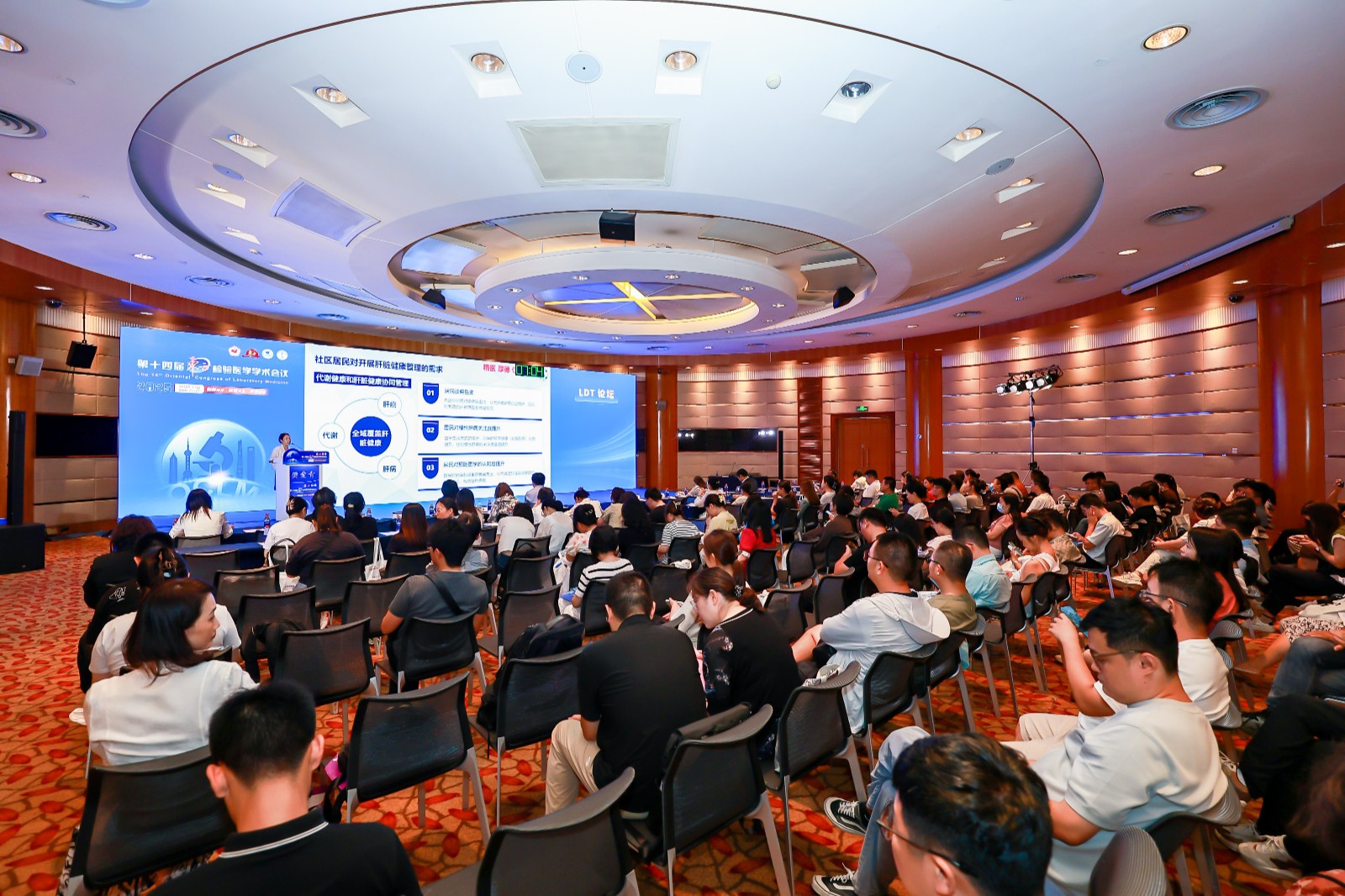
Such beautiful autumn scenery, gathered together for new knowledge. Recently, the 14th Oriental Laboratory Medicine Academic Conference was grandly held by the banks of the Huangpu River, building a comprehensive and high-quality academic exchange platform for colleagues in the field of laboratory medicine. The conference empowered all parties with innovative achievements and led the discipline to achieve a new leap in value.
During the conference, the thematic seminar "Innovation Leads, Standards First - Practice and Breakthrough of Early Liver Cancer Screening in Primary Communities" hosted by Dunwill Medical was successfully held on the afternoon of September 26, attracting more than 200 experts and scholars in the laboratory field at home and abroad to attend.
Professor Guo Wei, Chairman of the Shanghai Medical Laboratory Medicine Specialty Branch and Director of the Clinical Laboratory of Zhongshan Hospital Affiliated to Fudan University, pointed out in her opening speech that today's society has entered the intelligent era, and the paradigms of life and work have undergone earth-shaking changes. Against this background, the establishment of a multi-modal integration model for early liver cancer diagnosis and its application at the primary level marks the first step in paradigm change. She emphasized that in the future, we should further promote the in-depth integration of laboratory medicine and artificial intelligence, and effectively apply advanced technologies to clinical practice and primary-level medical services to serve the "Healthy China" strategy, which is also the original aspiration we have always adhered to.
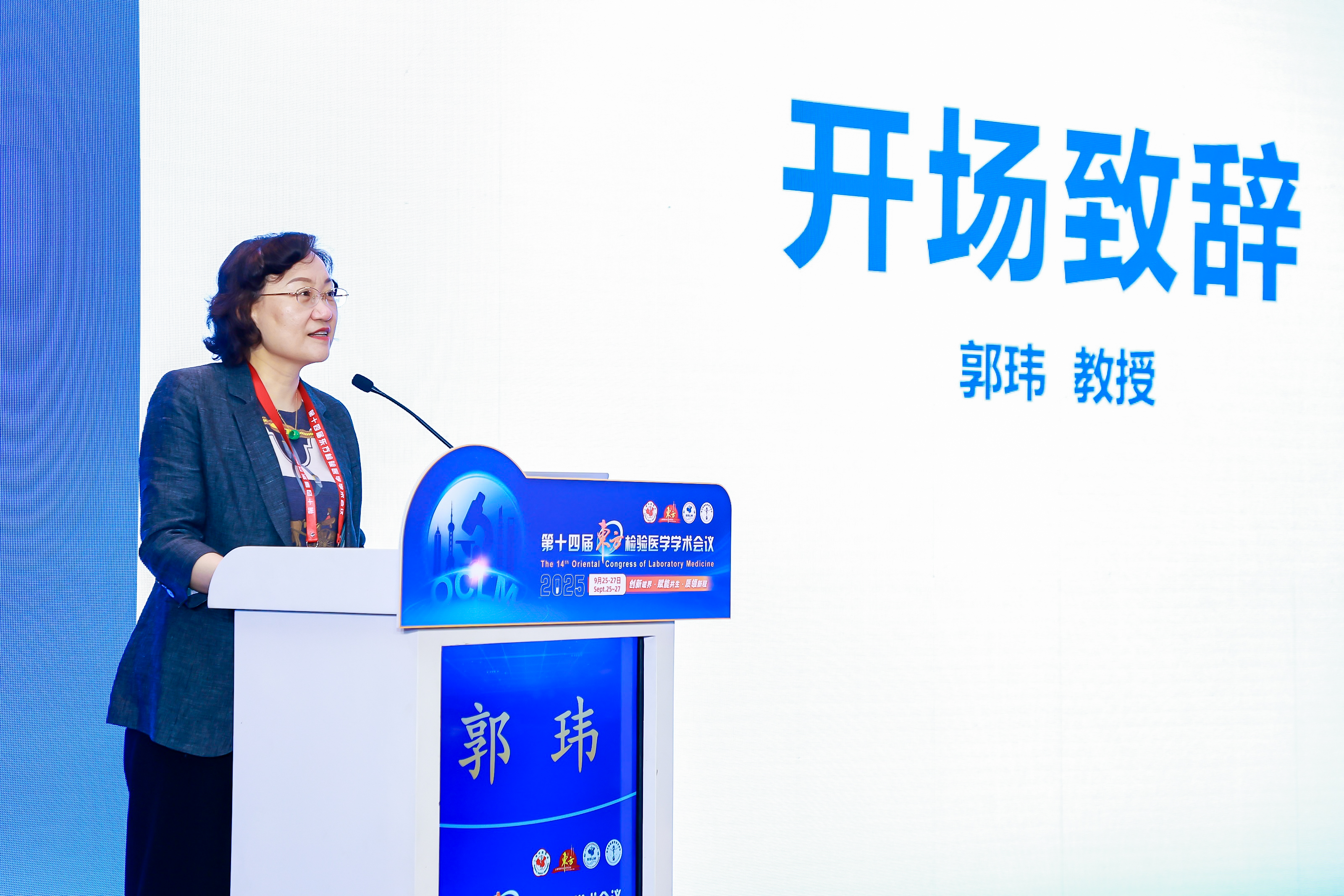
During the Report Session, Professor Fan Aiqing, Director of Sunqiao Community Health Service Center in Pudong New Area, Shanghai, delivered a report titled Exploration of Liver Health Management Strategies for Community-Based Cohorts of the General Population Guided by National Medical Centers. She shared the center’s practical experience in conducting community-based liver health management for residents, against the backdrop of empowerment by innovative technologies and the linkage of hierarchical medical and health services. She pointed out that to meet residents’ growing demand for liver health management, Sunqiao Community Health Service Center in Pudong New Area, Shanghai, has closely relied on the technical support from Zhongshan Hospital Affiliated to Fudan University (a National Medical Center) and introduced the "Liver Disease Pathway (LDP)"—a digital solution for refined liver health management. Built into this system are standardized clinical pathways (based on China’s Clinical Guidelines for the Diagnosis and Treatment of Primary Liver Cancer) and multiple risk stratification models. Combined with an end-to-end interconnected mobile platform for off-hospital follow-up, the system has realized a digital closed-loop management covering the entire process of liver disease, including "screening, diagnosis, treatment, and management." This has effectively addressed key challenges faced by communities in liver health management—such as difficulties in identifying high-risk groups, lack of standardized pathways, and insufficient effective follow-up tools—while significantly improving the efficiency of community-based screening and residents’ compliance.
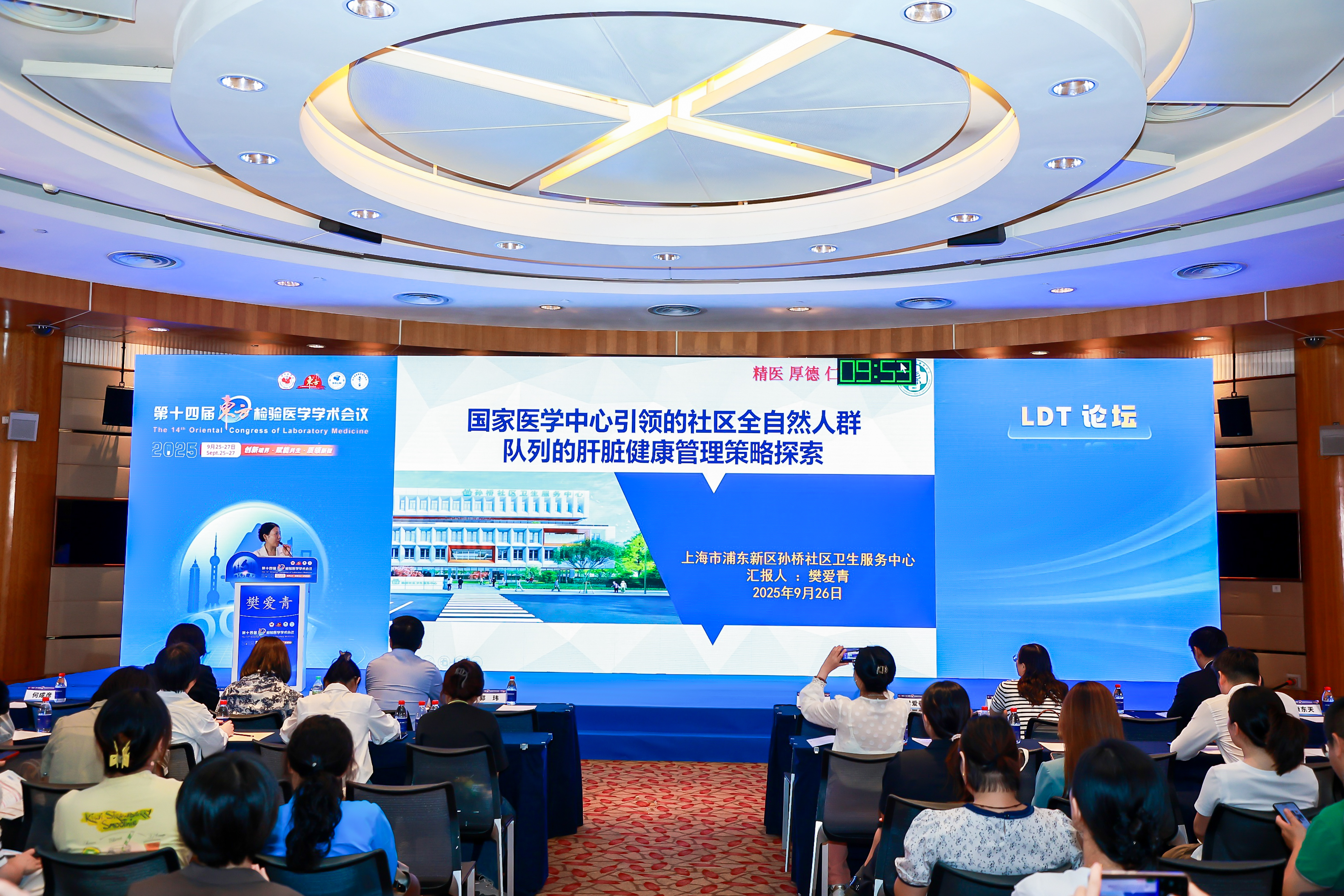
At the diagnostic Level, the project adopts the miRNA7 molecular detection technology, which has obtained approval from the National Medical Products Administration (NMPA) and is covered by medical insurance. In terms of diagnostic performance for very early-stage liver cancer, this technology is significantly superior to traditional biomarkers such as AFP and DCP, providing a powerful and reliable tool for early community-based screening. Furthermore, Sunqiao Community will implement a "liver metabolic health - combined management of diabetes and liver disease" strategy to comprehensively assess the liver metabolic status, reduce liver health burden in a stratified manner, and fully alleviate the public health pressure caused by liver diseases. By integrating multi-party resources, the project plans to establish a health database covering the elderly, middle-aged and young people, and populations in functional communities within three years. It will accumulate large-scale cohort data, verify the medical value and practical promotion value of the model, and thus build a replicable and promotable community liver health management model, providing demonstration experience for national health management.

Subsequently, Professor Zhao Xiaojun, Director of the Immunology Service in the Biochemistry and Immunology Laboratory of the Shanghai Clinical Laboratory Center, delivered a presentation titled Introduction to the Standardization Project of Serum Protein Biomarkers in the Multi-Modal Fusion Model for Early Liver Cancer Diagnosis, systematically expounding on the project’s background, challenges, and implementation pathways. She stated that multi-modal data fusion—by integrating patient information and data from multiple biomarkers—can significantly improve the efficacy of early liver cancer diagnosis and advance personalized treatment. However, core serum biomarkers (such as AFP, PIVKA-II, and AFP-L3) face standardization issues, including inconsistent units used across different detection platforms. Additionally, there is a lack of systematic external quality assessment (EQA) programs for PIVKA-II and AFP-L3 globally. These problems have hindered the clinical promotion and application of excellent diagnostic models such as GAAD and GALAD.
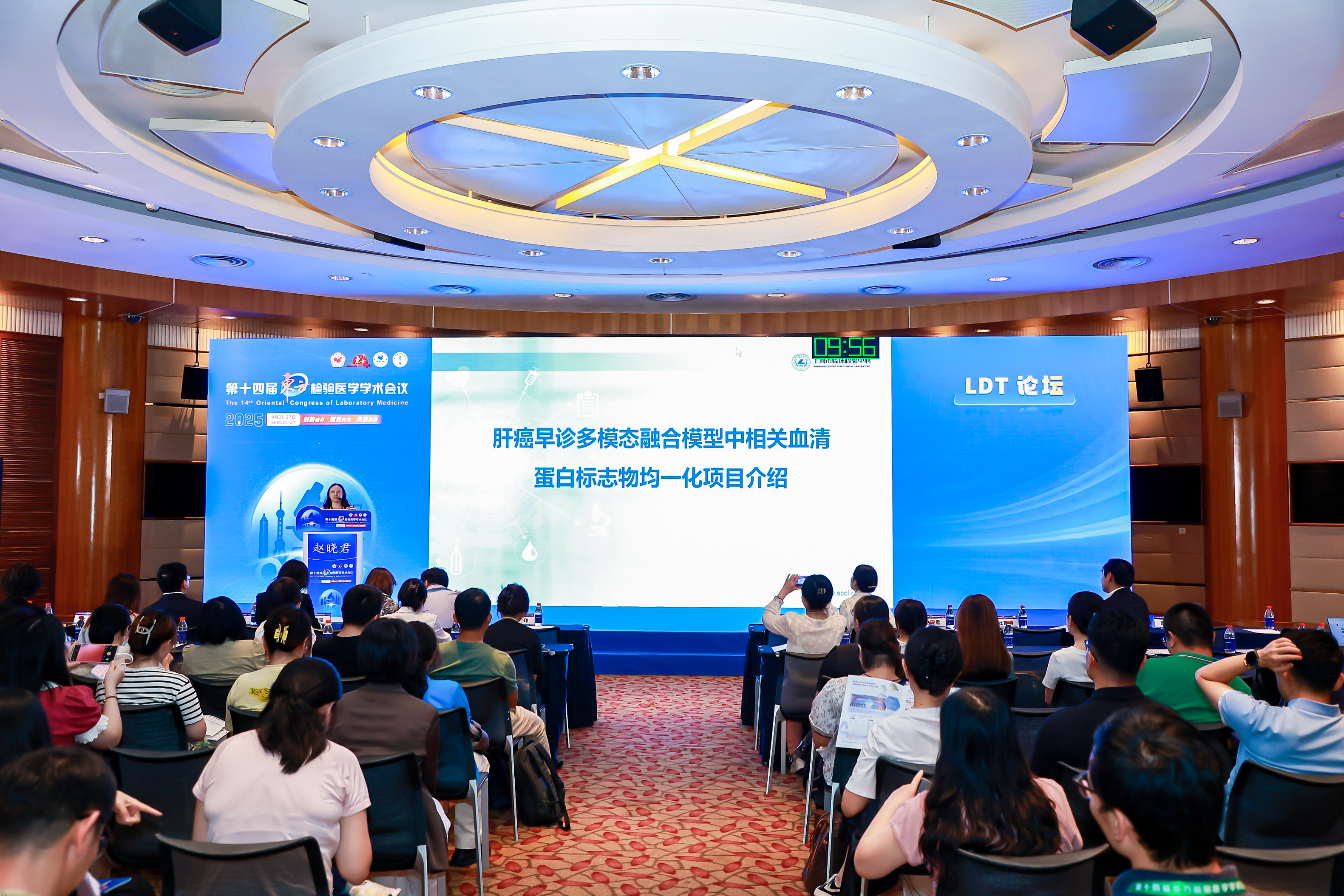
To address this bottleneck, led by the Shanghai Medical Laboratory Medicine Specialty Branch, this standardization project is jointly organized by the National Institutes for Food and Drug Control (NIFDC), Shanghai Center for Disease Control and Prevention (SCDC), Shanghai Clinical Laboratory Center, and Zhongshan Hospital Affiliated to Fudan University. It aims to enhance the universality of multi-modal fusion liver cancer diagnostic models in clinical promotion through the standardized evaluation of serum protein biomarkers for liver cancer. The project plans to advance in three phases. Phase 1: Planning and Preparation – Recruit testing platforms and prepare evaluation reference materials. Phase 2: Testing Standardization Evaluation – Conduct reference material testing in collaboration with multiple laboratories. Through statistical analysis of inter-laboratory and intra-laboratory variations, assess the consistency of each indicator. Phase 3: Model Standardization Evaluation – Using Roche’s GAAD/GALAD models as references, evaluate the cross-platform applicability of the models and the impact of standardization on the generalized use of the models. Additionally, explore the further integration of new biomarkers such as miRNA7 on this basis to build a new generation of multi-modal diagnostic models with better performance. The expected outcomes of the project will help optimize early liver cancer diagnosis protocols and promote wider and more accurate application of multi-modal fusion models in clinical practice.
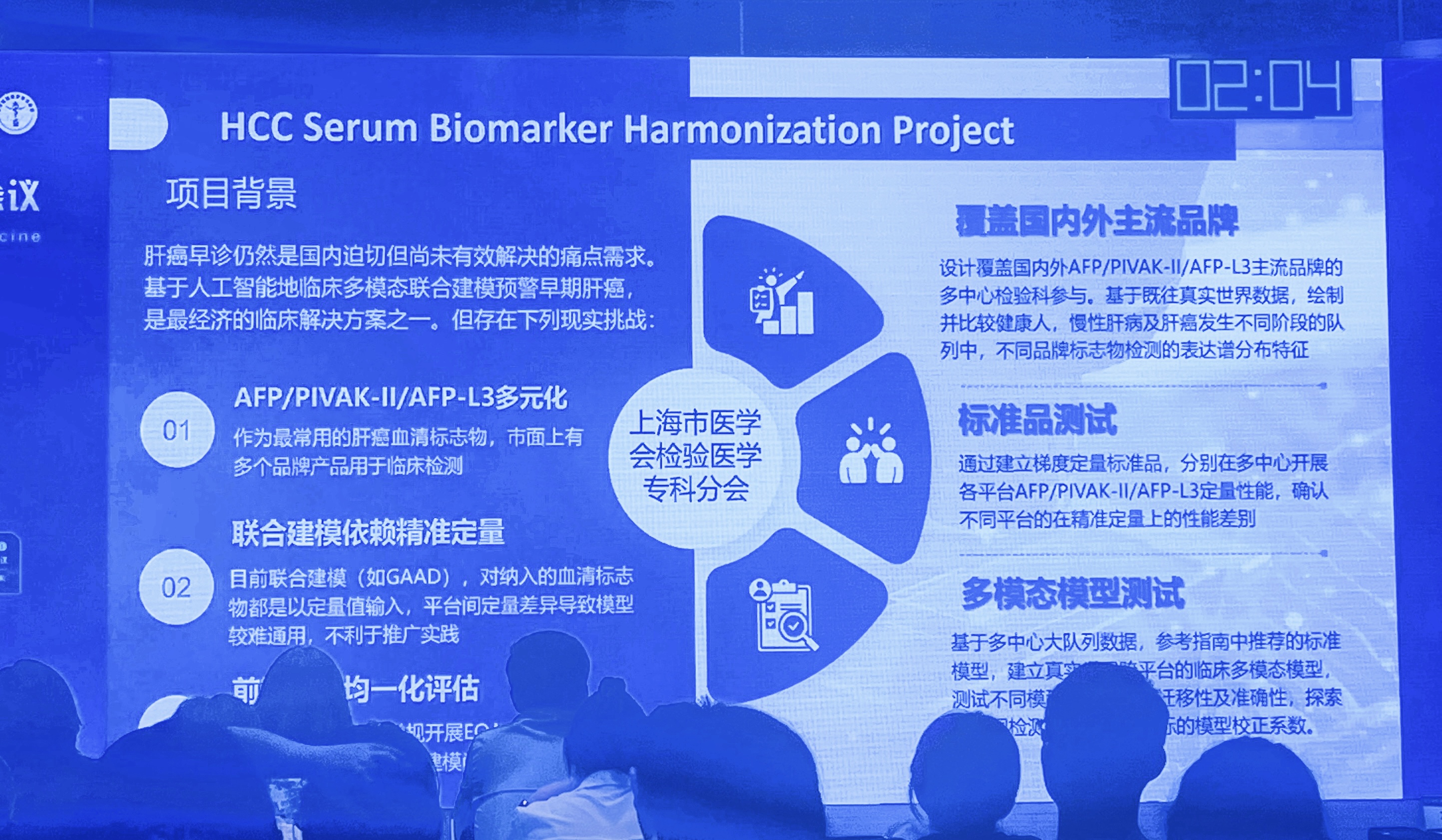
At the conclusion of the conference, the launch ceremony of the "Standardization Project for Serum Protein Biomarkers of Liver Cancer" was grandly held in a warm atmosphere. Witnessed by all the guests present, Professor Guo Wei (Chairman of the Shanghai Medical Laboratory Medicine Specialty Branch and Director of the Clinical Laboratory of Zhongshan Hospital Affiliated to Fudan University), Professor Shi Liang (from Shanghai Center for Disease Control and Prevention), Professor Lü Wange (Director of the Clinical Laboratory of the First Affiliated Hospital of Sun Yat-sen University), Professor Fan Aiqing (Director of Sunqiao Community Health Service Center in Pudong New Area, Shanghai), and Professor Zhao Xiaojun (Director of the Immunology Service in the Biochemistry and Immunology Laboratory of the Shanghai Clinical Laboratory Center) took the stage together and pressed the launch button jointly. This important moment marks the official kickoff of the Standardization Project for Serum Protein Biomarkers of Liver Cancer, and also opens a new chapter for improving the level of early liver cancer diagnosis in China.
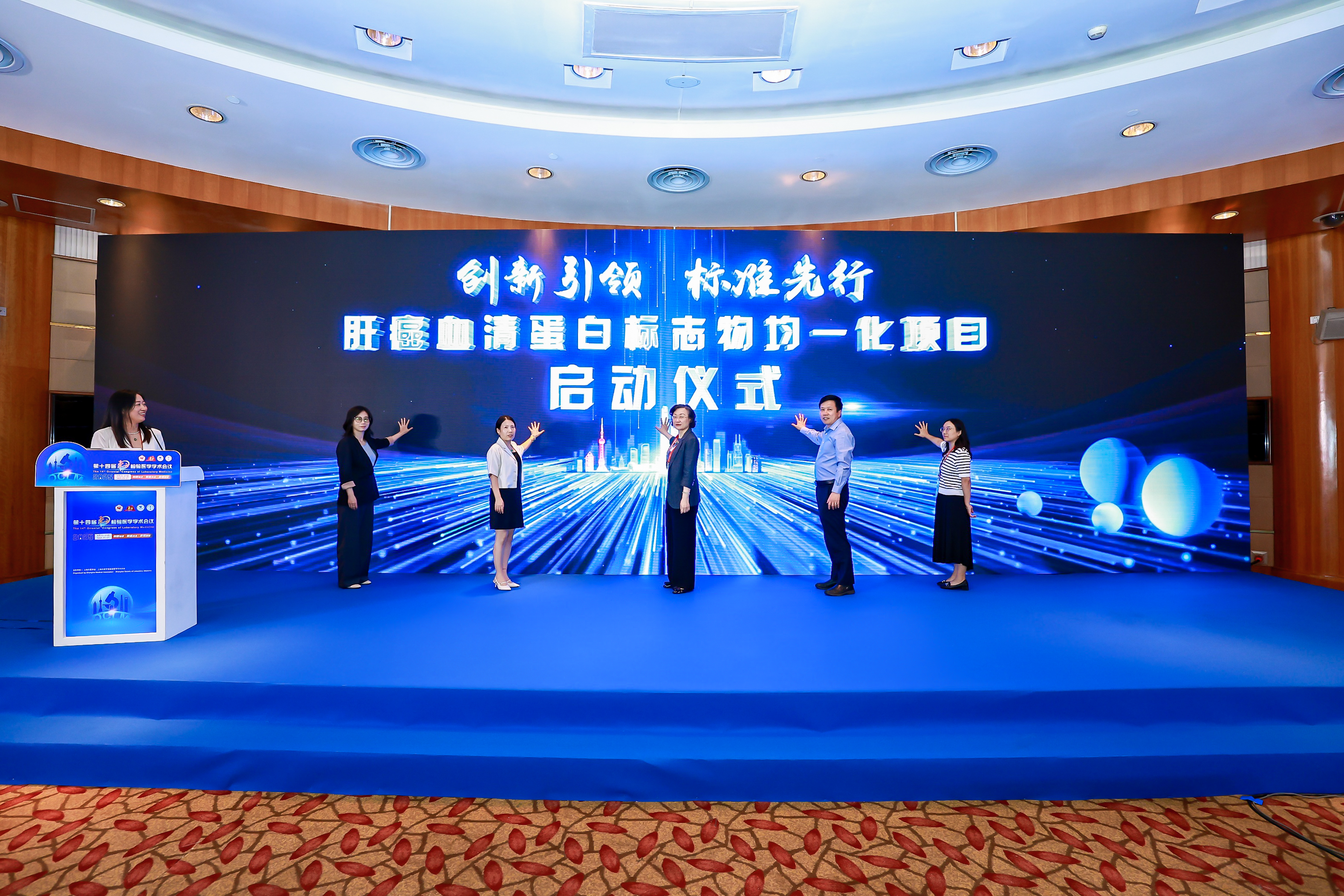
Boundless innovation, synergizing for win-win outcomes. Looking ahead, we anticipate that the implementation of these innovative projects—integrating wisdom and efforts—will significantly enhance the efficiency and accuracy of early liver cancer diagnosis. They will provide valuable experience and references for the field of liver cancer diagnosis and treatment, and contribute to achieving the goal of more precise and efficient national health management. Let us join hands and work together to write a new chapter where laboratory medicine empowers healthcare and serves the people’s well-being!


